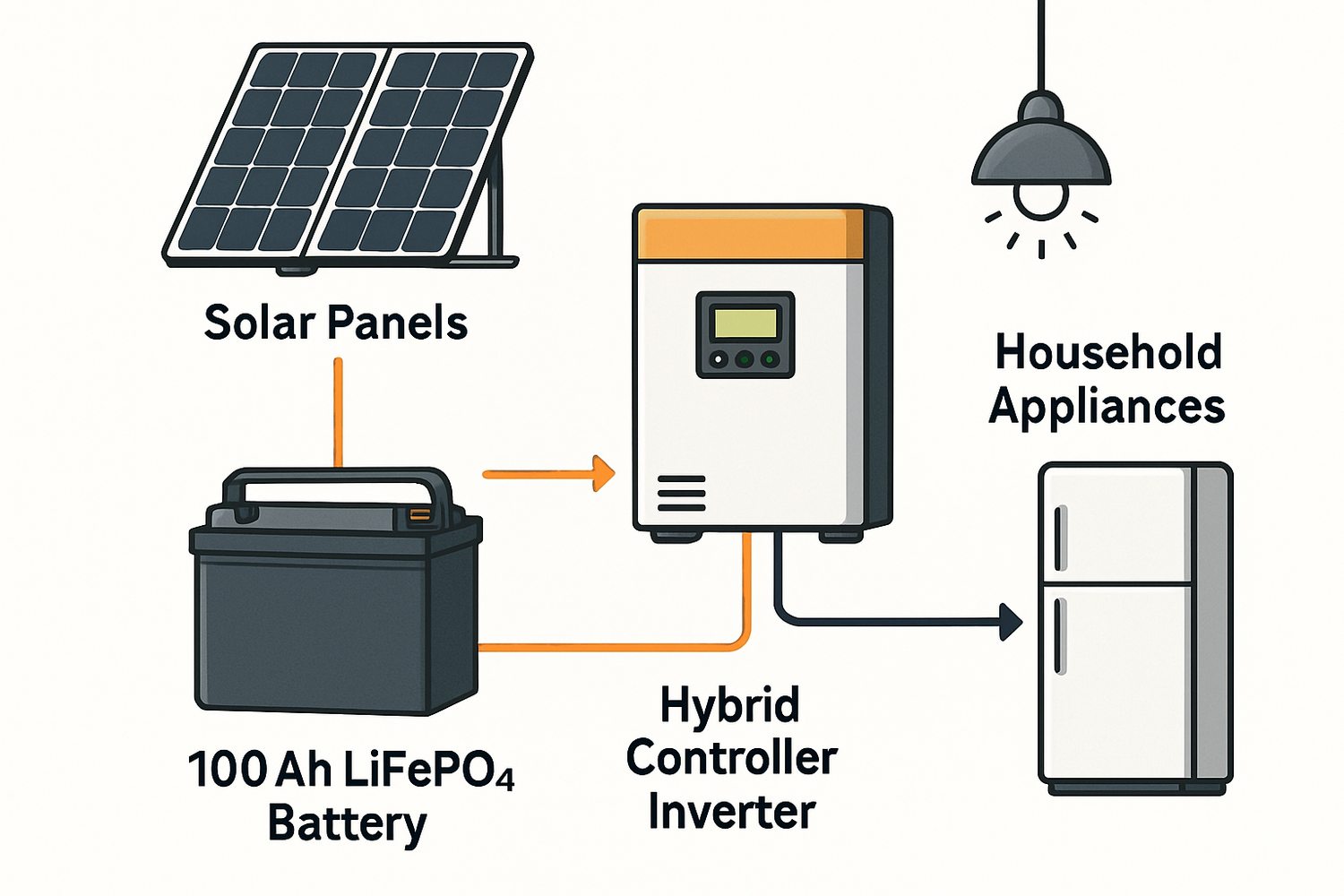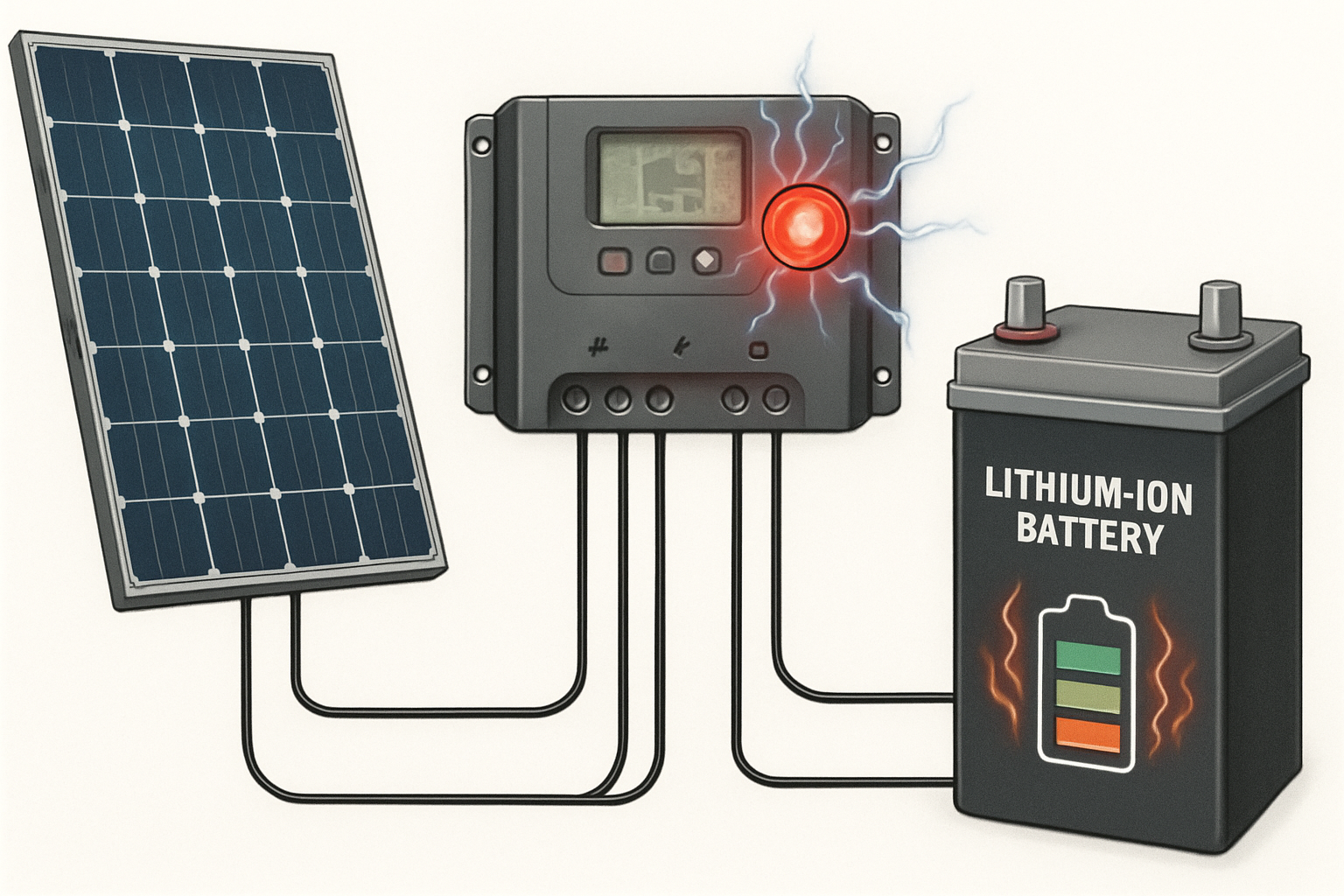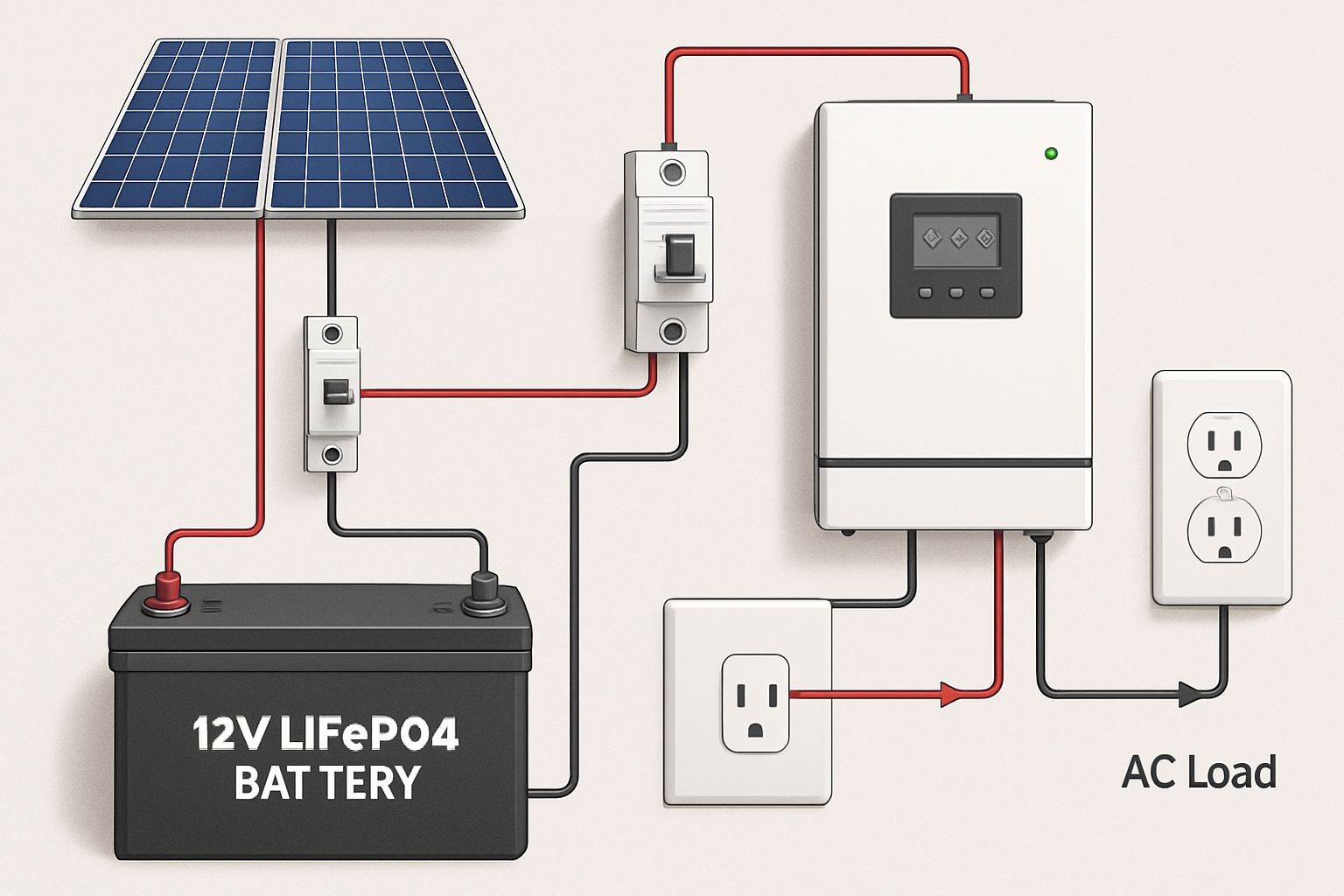Establishing a reliable power source in a location without grid access presents a unique set of challenges. For many, the goal is energy independence without sacrificing modern conveniences. This case study examines a practical and effective off-grid power solution built around two key components: a high-performance 100Ah Lithium Battery and an intelligent hybrid controller inverter. We will look at the system's design, real-world application, and performance, demonstrating how modern technology makes self-sufficient power more accessible than ever.
System Design: The Core Components of an Off-Grid Powerhouse
A successful off-grid system is more than just a collection of parts; it's an integrated solution where each component works in harmony. The battery stores the energy, the inverter converts it for use, and the solar panels generate it. The synergy between these elements determines the system's efficiency and reliability.
The Heart of the System: The 100Ah LiFePO4 Battery
The foundation of this setup is the 12V 100Ah lithium iron phosphate (LiFePO4) battery. With a capacity of approximately 1280 Watt-hours (12.8V x 100Ah), it's an excellent choice for small to medium off-grid applications. LiFePO4 chemistry offers significant advantages over older technologies. It provides a long cycle life, often exceeding 4,000 cycles at 80% depth of discharge. This durability ensures a lower total cost of ownership over the system's lifespan. Furthermore, these batteries are known for their thermal stability and safety, a critical consideration for any home energy system.
The Brains of the Operation: The Hybrid Controller Inverter
The hybrid controller inverter is the central management unit of this off-grid system. It combines the functions of a solar charge controller, a power inverter, and a battery charger into a single, efficient device. This integration simplifies installation, reduces wiring complexity, and saves valuable space. The hybrid inverter intelligently manages the flow of energy, prioritizing power from the solar panels to charge the 100Ah lithium battery and run appliances simultaneously. When solar generation is insufficient, it seamlessly switches to battery power. According to a report by IRENA, the use of grid-forming inverters, often linked with battery systems, is a proven technology for creating stable and reliable mini-grids. Grid Codes for Renewable Powered Systems highlights how these inverters are essential for providing necessary services in off-grid conditions.
Capturing the Sun: Solar Panel Configuration
To effectively charge a 1280Wh battery and power daily loads, the solar array must be sized appropriately. A common approach is to have a solar array with a wattage of at least two to three times the battery's amp-hour rating. For this 100Ah battery, a solar array between 300W and 500W is a good starting point. This capacity ensures the battery can be fully recharged even on days with less-than-ideal sunlight, securing a consistent power supply.
The Setup in Action: A Real-World Application
To illustrate the system's capability, consider its application in a remote cabin used for weekend getaways. The primary power requirements include LED lighting, a small energy-efficient refrigerator, charging for laptops and phones, and a low-wattage water pump.
Installation and Performance
The installation connects the solar panels to the hybrid controller inverter, which then connects to the 100Ah lithium ion deep cycle battery. The inverter's AC output powers the cabin's electrical panel. During the day, the solar panels generate power that is used directly by the appliances, with the excess energy stored in the lithium battery. In the evening or on cloudy days, the inverter draws power from the battery. The system's performance is consistently reliable. On a sunny day, the battery is fully charged by early afternoon while simultaneously powering daytime loads. The stored energy is more than sufficient to cover all evening and overnight needs. For a detailed breakdown of how to evaluate battery performance, you can review this ultimate reference on solar storage performance, which covers key metrics like cycle life and efficiency.
| Appliance | Power (Watts) | Daily Use (Hours) | Daily Energy (Wh) |
|---|---|---|---|
| LED Lights | 20 | 5 | 100 |
| Efficient Refrigerator | 50 (average) | 8 (run time) | 400 |
| Laptop Charging | 65 | 3 | 195 |
| Phone Charging | 10 | 4 | 40 |
| Water Pump | 100 | 0.5 | 50 |
| Total Daily Consumption | 785 Wh |
Key Advantages of a Lithium-Based Hybrid System
Choosing a lithium battery off-grid system with a hybrid inverter provides several distinct benefits that contribute to a superior user experience and long-term value.
Reliability and Longevity
The long cycle life of a lithium iron phosphate battery means it can be charged and discharged thousands of times with minimal degradation. This translates to over a decade of reliable service under normal use. Research supported by the U.S. Department of Energy demonstrates how microgrids using grid-forming inverters and battery storage can autonomously restore power, showcasing the high level of reliability these technologies provide. This is detailed in the Success Story on Using Renewable Microgrids to Keep the Lights On, where such systems were able to restart a grid after a complete outage.
Scalability and Flexibility
This system design is inherently scalable. As energy needs grow, the system can be expanded by adding more 100Ah lithium batteries in parallel to increase storage capacity. Likewise, more solar panels can be added to boost power generation. The hybrid inverter is designed to manage these expansions, offering a flexible path for future upgrades without needing to replace core components.
Efficiency and Power Quality
Modern hybrid inverters produce a pure sine wave AC output, which is a clean and stable form of power that is safe for sensitive electronics like computers and televisions. The work of organizations like the Electric Power Research Institute (EPRI) has been foundational in developing advanced inverter technology. As noted in an EERE Success Story, these smart inverters are critical for maintaining a balanced and stable power supply.
Final Thoughts on This Off-Grid Solution
This case study confirms that a well-designed system using a 100Ah lithium battery and a hybrid controller inverter is a powerful and dependable solution for off-grid power needs. It provides the energy required for modern comforts in a compact, efficient, and long-lasting package. By harnessing solar energy and storing it in a high-performance lithium battery, users can achieve true energy independence, powering their homes, cabins, or farms with clean and reliable electricity.
Frequently Asked Questions
What can you run on a 100Ah lithium battery?
A 12V 100Ah LiFePO4 battery provides about 1280 Watt-hours of energy. This is enough to power small appliances like LED lights, a small energy-efficient refrigerator, charge multiple laptops and phones, and run a small water pump for several hours.
How long will a 100Ah battery last in an off-grid system?
The duration depends entirely on your load. To calculate it, divide the battery's capacity (1280Wh) by the total wattage of your appliances. For example, a 100W load could theoretically run for about 12.8 hours. However, always factor in a buffer and avoid discharging the battery completely.
Is a hybrid controller inverter necessary?
While you could buy a separate charge controller and inverter, a hybrid unit simplifies installation, reduces wiring complexity, and saves space. Its integrated system management often leads to better overall performance and efficiency for a lithium battery off-grid system.
Can I expand this system later?
Yes, most systems built with quality components are designed for scalability. You can typically add more 100Ah lithium batteries in parallel to increase your storage capacity and add more solar panels to increase your generation, as long as your hybrid inverter can handle the additional capacity.





Leave a comment
All comments are moderated before being published.
This site is protected by hCaptcha and the hCaptcha Privacy Policy and Terms of Service apply.